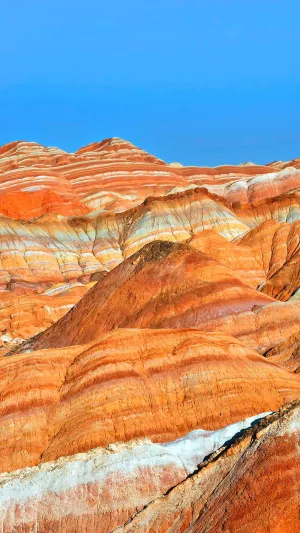Bryce Canyon National Park is one of the Seven Wonders of the World and one of the most worthwhile national parks in the United States. Grand Canyon National Park is located in southern Utah, on the north bank of the Colorado River. It is a tourist destination famous for its bizarre and brightly colored rocks.
There are fourteen valleys with a depth of 300 meters in the canyon. The rocks are eroded by wind, frost, rain and snow and show more than 60 different chromatic colors. With the change of brilliance, the color of the rocks changes at any time. Bryce Canyon Park has been a U.S. National Park since 1924.
Bryce Canyon National Park, known as the palace of natural stone figurines, covers an area of 145 square kilometers. The landscape here features natural rock pillars formed 60 million years ago. Because the surface was eroded by glaciers, severe frost and storms, the rocks were broken and disintegrated, and the resulting stone forest area was a spectacle. When the sun rises from the east and the light is cast on the rock pillars, the amber-colored stone pillars will become crystal clear in an instant, which is breathtakingly beautiful.
Although Bryce Canyon National Park has the word canyon in its name, it is not a real canyon, but a huge "natural amphitheater" formed by erosion along the east side of the Ponsa Gaunt Plateau.
The forests and grasslands of Bryce Canyon provide habitat for some birds and small mammals, as well as mountain lions and black bears. Mule deer are the most common large mammals in the park. While human activity has caused major damage to wildlife habitats in most parts of the United States, low rainfall in southern Utah has greatly limited human activity, resulting in enhanced wildlife diversity in this region, which is less affected by human influence.
The park also has the darkest night sky in North America. Astronomers can see about 7,500 stars with the naked eye, and most places can only see less than 2,000 stars due to light pollution (in many large cities you tend to see only a few stars).
Many people choose to visit here in winter, when Bryce Canyon is a wonderland, and people have fun here. Thousands of red and orange rock pillars take strange shapes and are covered with white snow.
At this time, the Park Service will clear the 24-kilometer viewing drive to Rainbow Point, allowing visitors to drive to the winter attractions. Regardless of the season, however, the most coveted trails are Bryce Canyon's various trails, which run up the steep canyon floor and rise like towers to the blue sky. With permission, travelers and cross-country skiers can camp at designated winter camps. Cross-country skiers can weave between bearberry, dwarf and ponderosa pines along the rim of the canyon.
Skiers who don't mind snow falling into their collars can venture down steep trails to the bottom of the canyon. Visitors willing to walk through Utah's snowpack can also do winter hikes in the canyon. The snow is more than knee-high, making it difficult to walk, but you can enjoy some of the most spectacular winter scenery in the world. The local visitor center provides snowshoes for visitors free of charge.





